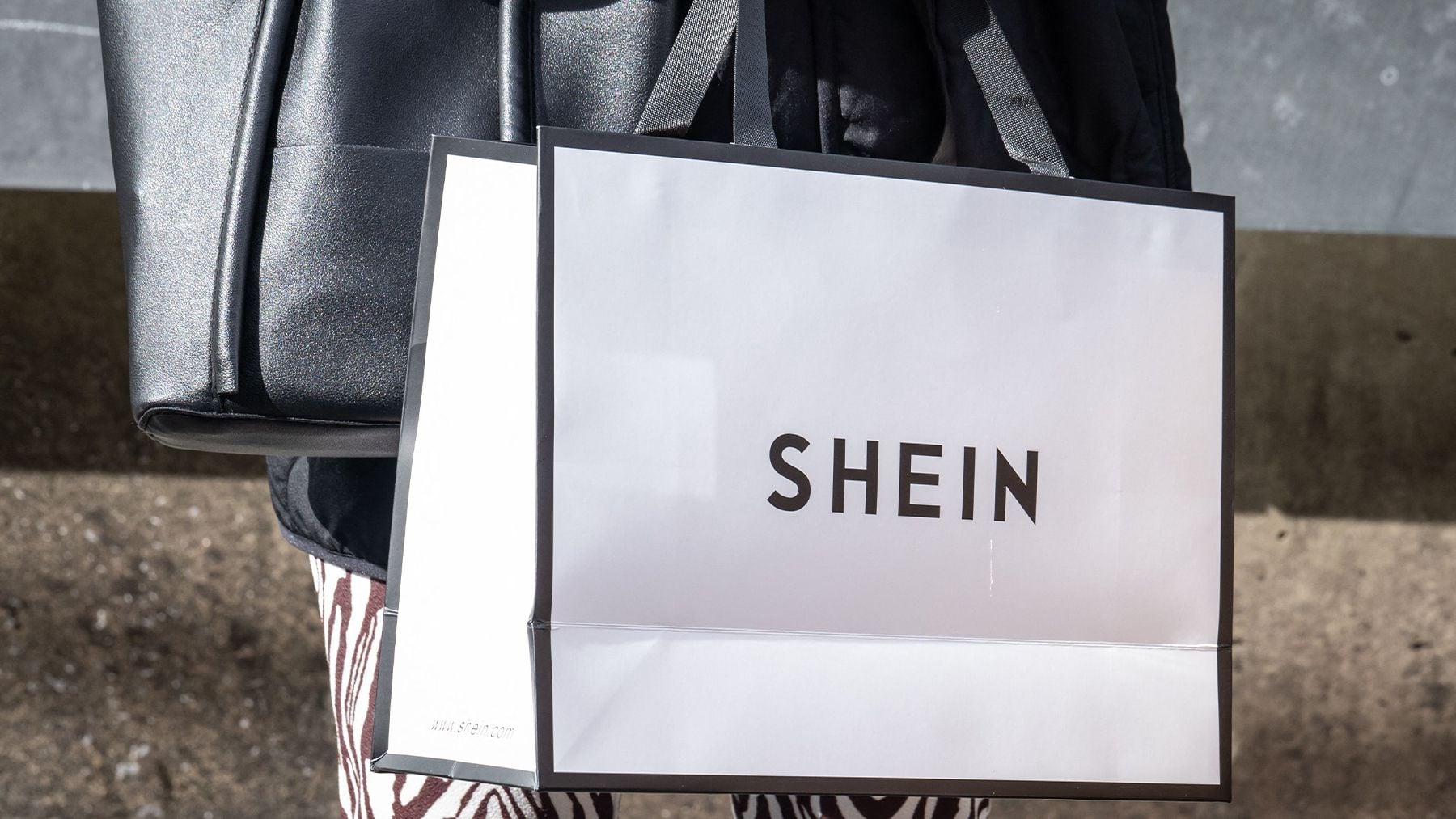
H&M wants to be more like Shein.
In an effort to reverse years of sluggish performance, the Swedish retailer is promising to deliver trends to market with more speed, efficiency and flexibility.
New competition “requires us to react quicker,” new CEO Daniel Ervér told the Financial Times days into starting the job. At the same time, the company remains committed to delivering on ambitious sustainability goals that include halving its environmental footprint by the end of the decade.
Ervér, it seems, is trapped between financial investors’ expectations and Asian factories’ coal-powered grids.
That’s because matching Shein’s growth means adopting a business model that is the antithesis of sustainability.
And the Swedish retailer isn’t alone. The ultra-fast-fashion company’s explosive growth has set a new competitive bar for the industry. While investors see Shein’s playbook as a path to ever greater payback, it is also accelerating a race to the bottom that celebrates privatising profits while socialising human and environmental damage.
A New Model — Instant Fashion
Much of Shein’s success is the result of a potent system that is predicated on unrivalled speed, unprecedented newness, and dirt-cheap output.
To start the process, Shein draws on social media and customer data and search history to determine the latest trends. Chosen styles are then translated into products by hundreds of in-house designers and thousands of independent contractors. A ready stock of pre-purchased synthetics, sophisticated capacity planning and a standing network of over 5,000 Chinese factories then allows Shein to move from concept to finished product in as little as 10 days.
Unlike most of its competitors, Shein does not need to forecast what will sell in the future because it produces instant fashion from real-time trends. These items are sourced in batches of 100 to 200 units using algorithms to choose winners based on sell-through data. It’s an efficient process that the company says reduces waste overstock to next to nothing, but it repeats at an unprecedented pace.
Shein reportedly introduces as many styles in a few weeks as Zara does in a year. University of Delaware professor Sheng Lu catalogued 1.3 million new products launched by Shein over a 12-month period. And this relentless churn of products sells at rock-bottom prices. According to the BoF-McKinsey State of Fashion 2024, Shein’s average price per item is $14, 46 percent less than H&M and 61 percent less than Zara.
In effect, Shein has taken fashion’s already-flawed operating system and turbocharged it. And this model is gaining market share because it works. Shein has grown by more than 20 times since its 2018 entry into the United States with sales reportedly now topping $30 billion. Though Shein is the biggest and best-known brand pursuing this model, it is by no means the only one
Who Pays?
How is it possible for Shein to deliver a three-pack pyjama set for $10.84 or a ribbed sweater for $8.74? Post-pandemic excess capacity in Chinese factories certainly helps. So too do Shein’s lack of physical stores, its sophisticated planning technology and its use of inexpensive fossil fuel-based synthetics.
However, these explanations are incomplete.
Shein’s ability to deliver inconceivably low prices also results from transferring the social and environmental costs that ought to be borne by the company onto society.
For example, according to Shein’s own data the company conducted 2,800 supplier audits in 2022, enough to cover roughly half of its contract manufacturers. (This compares unfavourably to other like-sized competitors. Both Nike and H&M audit 100 percent of their finished goods suppliers). The company told CNBC that among those factories audited, 11 percent received a failing grade, requiring immediate corrective action or a cessation of orders.
An undercover investigation by UK reporters in 2022 revealed that some Shein partner factory employees were working up to 18 hours per day and getting paid under four cents per garment. Another 2022 investigation by Bloomberg found that some garments shipped to the US by Shein were made with cotton from China’s Xinjiang region — a violation of an American ban designed to prevent goods that could be linked to forced labour from entering the country. (Shein has since pledged millions of dollars to improve its supply chain and says it has no suppliers in Xinjiang).
Meanwhile, the company’s rapid turnover of ultra-low-cost products and gamified sales tactics are helping to boost excessive fashion consumption to new levels — with consequential environmental fallout. Almost two thirds of Shein’s products are made from microplastic-shedding polyester, more than double the proportion found in H&M and Zara’s collections. A recent Greenpeace investigation found that 15 percent of the company’s products contain concentrations of hazardous chemicals that breach EU regulatory limits. (Shein has said it works with third-party testing agencies to ensure its suppliers meet chemical control standards aligned with European regulations).
The company’s carbon emissions grew by 52 percent last year to over nine million tonnes — the equivalent of close to one million long-haul flights. That’s despite a pledge to reduce its carbon footprint by 25 percent between 2021 and 2030. To be sure, Shein’s growing carbon footprint is in line with other fast-growing companies. That said, its disclosures do not count emissions associated with the use phase or the end-of-life of the brand’s clothing.
Can the ‘Sheinification’ of Fashion Be Stopped?
While factory workers, tax authorities, creators and the planet lose out, venture capital firms and sovereign wealth funds stand to gain. Shein is owned, in part, by venture capital firms General Atlantic and Sequoia China and by Abu Dhabi sovereign wealth fund Mubadala. It has filed to go public and is seeking a valuation in the tens of billions of dollars.
The prospect of what could be a blockbuster listing is attracting tougher scrutiny from regulatory bodies and public market investors. Beyond the environmental and social impact of its low-cost, high-speed model, Shein benefits from a tax loophole that exempts the millions of packages it sends direct to consumers from hefty import duties imposed on larger shipments. A June report by the House of Representatives found that in 2022 H&M and Gap paid $205 million and $700 million in import duties respectively, while Shein paid nothing on most of its shipments.
The company also stands accused of failing to protect user data and appropriating intellectual property. In 2022, it was fined $1.9 million by New York State for mishandling credit card information and misleading consumers about the concern of a data breach. Since 2018, more than 90 different designers and brands, including Ralph Lauren, Uniqlo and Zara, have filed lawsuits in US federal court accusing Shein of copyright or trademark infringement.
To counter concerns over the harm caused by its practices, Shein has raced to establish legitimacy by tripling its lobbying budget, committing tens of millions of dollars to NGOs and joining various industry consortia. It has also deployed its head of strategic communications Peter Pernot-Day to insist that the company is not a fast-fashion brand, but a “sustainable and accessible brand” that is not “involved with massive overproduction and destruction of garments.”
These claims are risible.
Each year, Shein sells somewhere between two and three billion units of cheap, mostly plastic clothing. After each garment’s short lifespan in use, it will spend generations in a landfill decomposing and emitting greenhouse gases.
And yet, ironically for a vaunted imitator, Shein is now being knocked off by brands including Temu, Trendyol, Urbanic, Cider and Newme. None of the high-powered roster of investment firms backing these businesses are answerable to the public or the planet.
The transition from conventional to fast to instant fashion has progressively ratcheted up the industry’s negative environmental and social impacts, threatening planetary boundaries and leaving workers suffering from ongoing abuses.
Two paths forward are possible to mitigate the destructive impact of this shift. Either the zeitgeist with respect to fashion consumption shifts, or regulation must be imposed to restrain the harmful impacts of an industry that has abrogated any responsibility beyond profit making.



